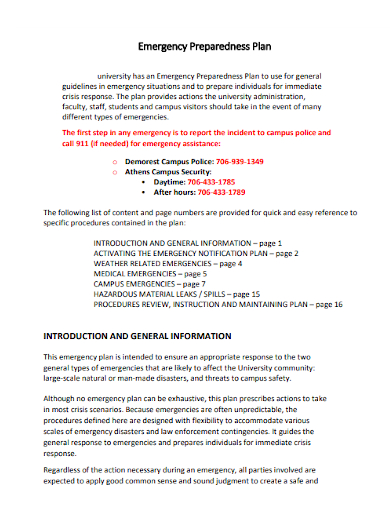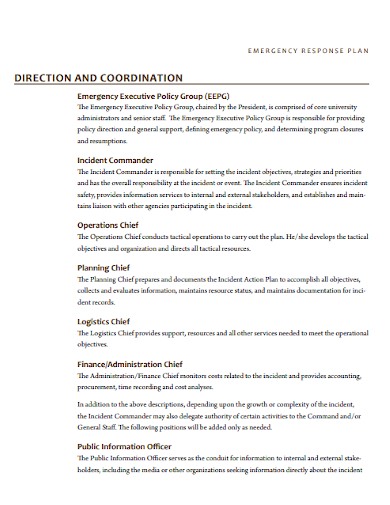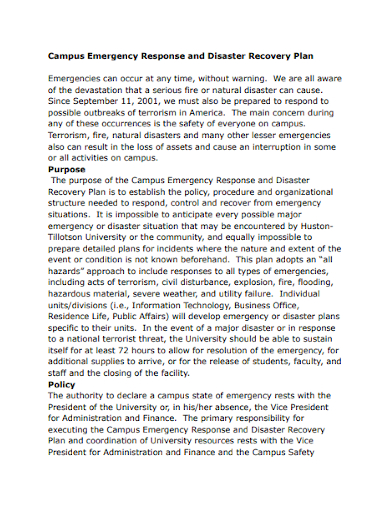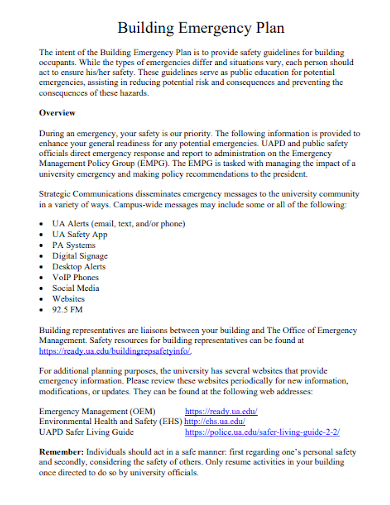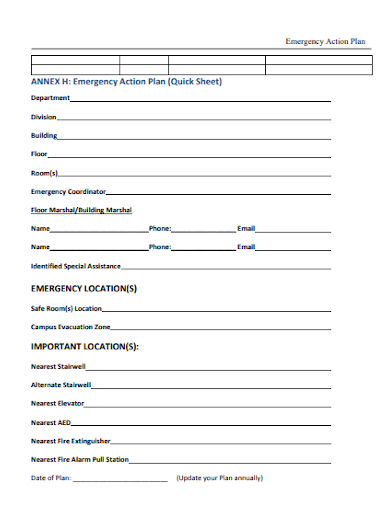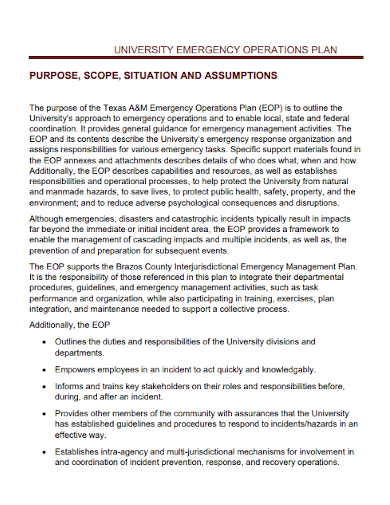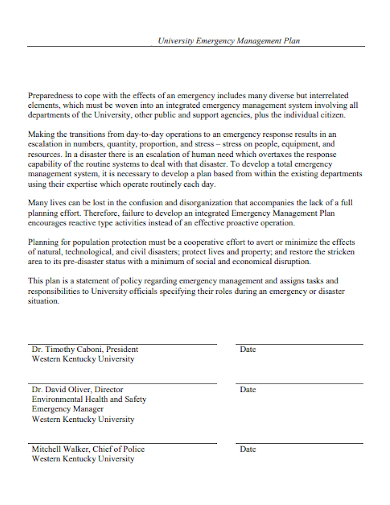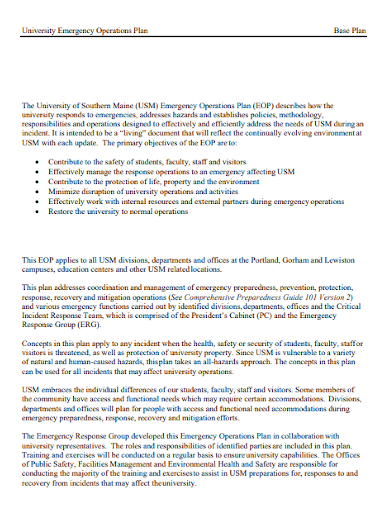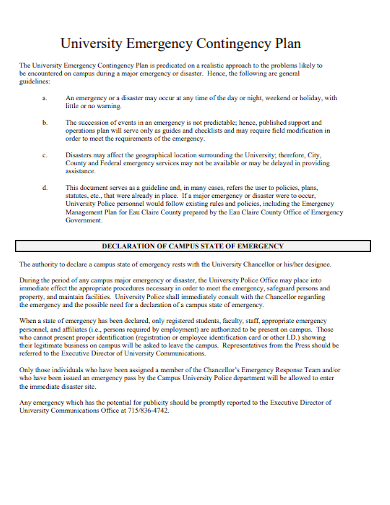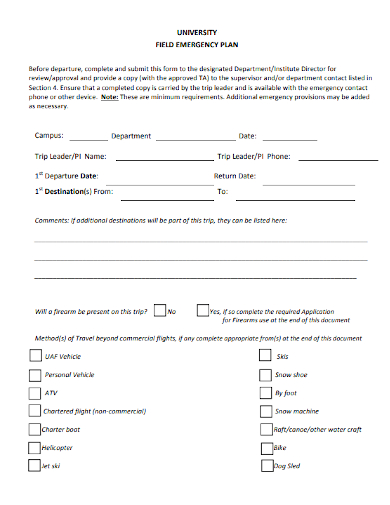Anywhere disasters can happen anytime and unfortunately, universities are not immune from any disasters that may happen unexpectedly. Disasters can range from mere annoyance to life-threatening situations. Since universities serve as a second home for both students and employees, university administrators need to ensure the health and safety of everyone in the university as one of their utmost priorities. To do this efficiently, an emergency plan should be created to outline any procedures to do when an emergency strikes to lessen the possibility of escalating the unfortunate situation and ensure that everyone will be safe and can evacuate the university in one piece if needed. If you are going to make an emergency plan for your university or you’re updating it, this article will guide you on how to make a university emergency plan.
10+ University Emergency Plan Samples
1. University Emergency Plan Template
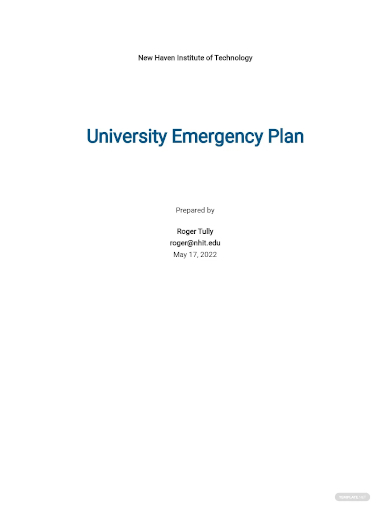
2. University Emergency Preparedness Plan
3. University Emergency Response Plan
4. University Campus Emergency Disaster Recovery Plan
5. University Building Emergency Plan
6. University Emergency Action Plan
7. University Emergency Operations Plan
8. University Emergency Management Plan
9. Sample University Emergency Plan
10. University Emergency Contingency Plan
11. University Field Emergency Plan
What is an Emergency Plan?
An emergency plan is a written procedure that outlines all necessary details of all the appropriate methods of response to various types of emergencies, such as natural or man-made disasters. The emergency plan is an essential component of any establishment’s safety procedures since it trains everyone in the establishment on how to follow the procedures to do in the emergency plan to avoid or reduce injuries and property damage in the event of an emergency.
Details to Include an Emergency Plan
1. Evacuation Procedures, Escape Routes, and Floor Plans
When an emergency happens, people need to respond quickly such as knowing where to go and how to get there as fast as possible. Depending on what type of emergency, people might either need to exit the building or navigate to a safer part of the building. The emergency plan should always include a floor plan of the entire university property (the floor plan should always be updated especially if the university did some renovations), marked evacuation routes, and all emergency exits. These should easily be located and identifiable. The floor plan is crucial whenever emergencies outside or inside the building may occur or when someone needs medical help and the responders need to know where the person is located. The floor plan should be posted on public hallways and employees and students should be oriented about this.
2. Reporting and Alerting Authorities
Most emergencies require the involvement of police, fire and rescue department, and medical professionals, contacting them such as 911 is easy to do however the university may need to contact specialized emergency responders for some emergencies. It’s important to also include all emergency numbers and contact numbers of all emergency lines and utility companies. It’s also important to include in the plan to designate a person to contact the authorities when an emergency happens to ensure that the emergency will be responded to quickly.
3. Alerting Staff and Visitors of an Emergency
Emergencies happen unpredictably and they can happen when a lot of students, faculty, staff, and visitors are around in the university so it is important to include in the plan how to communicate with them effectively. Your communication method will vary based on the size of the property and the type of emergency that is happening. You can install fire alarms, intercom systems, or bells to alert people that an emergency is happening.
4. Accounting for Everyone
It’s also important to include methods for identifying if anyone gets lost or injured during the emergency. Your plan can do this by regrouping people into manageable groups based on offices or departments they belong to or in specific areas they are located. Keep a printed roster and ask people to check in when they’re in a safe location.
5. Notifying Parents and Guardians
It’s also necessary to include a method on how to notify the students’ and staff’s parents, guardians, and next of kin when emergencies may happen. Depending on the situation, family members need to be alerted immediately to provide information on the current situation and to come and pick up their loved ones. The plan should include who is responsible for alerting family members, what emergencies require alerting families, and what information should be given.
6. Training Staff
And lastly, it is essential to create a policy to train all the staff, faculty, and students of the universities on what to do when emergencies break out and where to go to take shelter or escape.
FAQs
What are the steps of emergency management?
The steps of emergency management are:
- Prevention
- Mitigation
- Preparedness
- Response
- Recovery
What emergencies are likely to happen in universities?
Emergencies that may likely happen in universities, just like any other locations in the country are earthquakes, fires, floods, tornados (if you live in a place where tornadoes happen), winter storms (or heatwaves if you happen to live in a warm climate), and active shooters that impose terrorism inside universities.
Remember that a lot of changes can happen in so little time. As the person in charge of ensuring your emergency response is always efficient, you need to constantly update your emergency plan by reviewing and revising it annually or more frequently as needed. Don’t forget to take note of all the changes you will do to your plan. To help you get started making the emergency plan, download our free sample templates above to use as your guide!
Related Posts
FREE 7+ Fashion Business Plan Samples in PDF
FREE 10+ Sprint Planning Samples In MS Word | Google Docs | PDF
FREE 10+ Wedding Planning Samples in MS Word | Apple Pages | Powerpoint | PDF
FREE 9+ Monthly Study Planner Samples in PSD | Illustrator | InDesign | PDF
FREE 9+ Sample Curriculum Planning Templates in PDF | MS Word
FREE 10+ Teacher Development Plan Samples in MS Word | Google Docs | Apple Pages | PDF
FREE 10+ Basketball Practice Plan Samples in PDF
FREE 12+ School Business Plan Samples in PDF | MS Word | Apple Pages | Google Docs
FREE 7+ Client Strategic Plan Samples in PDF | MS Word
FREE 11+ Trucking Business Plan Templates in PDF | MS Word | Google Docs | Pages
FREE 7+ Small Hotel Business Plan Samples PDF | MS Word | Apple Pages | Google Docs
FREE 14+ Bakery Business Plans in MS Word | PDF | Google Docs | Pages
FREE 4+ Yearly Lesson Plan Samples in PDF
FREE 50+ Strategic Planning Samples in Google Docs | Pages | PDF | MS Word
FREE 10+ Construction Project Plan Samples in MS Word | Google Docs | Apple Pages | PDF

